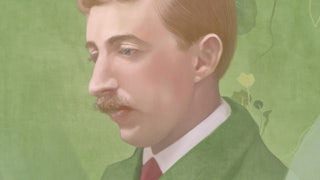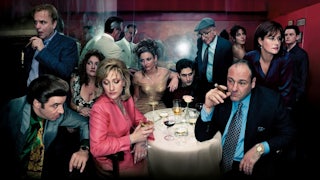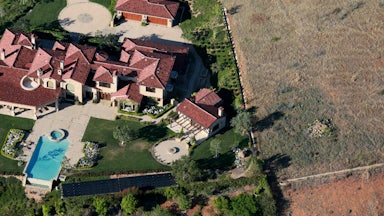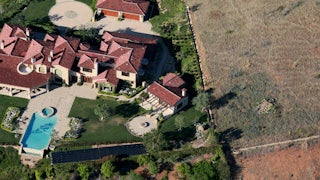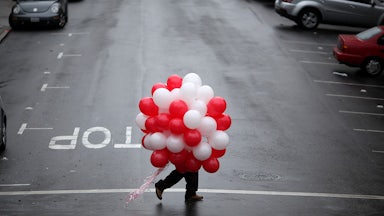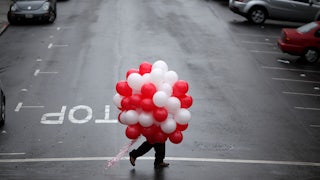An examination of psychiatry and organized crime, The Sopranos is—even more than most Mafia movies or TV shows—about the unique madness attending the boss of the American family: the father. Tony Soprano, a high-ranking mobster in the DiMeo crime family at the start of the show’s first season, at the end of the sixth is a double father—to his own (ungrateful) children, living with him in their suburban McMansion, and father figure to a nest of conspiracy-prone mafiosi. The weight of all this masculine authority begins to fracture Tony’s mind in season one, as his dream of ducks flying away with his penis gives way to panic attacks, which cause a tectonic upheaval in his sense of self. As memories of his mother, Livia, threatening to poke his eye out with a fork resurface in therapy, the unflappable double daddy becomes a son undone by mommy issues.
Manohla Dargis argued this week for referring to Tony Soprano in the past tense, even though critics usually write about the action of a fictional work in the present. He is simply more dead than other characters, she points out: As soon as Tony Soprano stopped existing, in 2007, his manner of disappearing (in that famous cut-to-black scene) became one of the most fabled things about him. Then the actor who played him, James Gandolfini, died at 51 in 2013—an absence that, Dargis writes, makes her “think of his signature character in the past tense.”
Despite his talent for manliness, living up to all these masculine typologies nearly drives Tony himself insane. His son, A.J., as Willy Staley pointed out in his essay on The Sopranos this week, never comes close to an imitation of his father: A.J.’s failures of manliness instead foreshadow “the coming era of male dysfunction: aimlessness, video games, economic uselessness, nu-metal and of course, that inheritance from Anthony Sr., depression.” Father figures whose expectations crush their sons are made more powerful by death, rather than less. Tony Soprano, who is both doubly dead and doubly a dad, looms massively over his son in particular and culture in general. A new prequel movie, The Many Saints of Newark, takes up the unfinished business of Tony’s toxic (he literally dumps asbestos in a lake) paternalism to examine its origins in his own father figures.
The Many Saints of Newark is set in the Sopranos universe, written by David Chase and Lawrence Konner, and directed by Alan Taylor. All worked on the original series. The film opens on Tony’s childhood in the 1950s, with his 11-year-old self played by William Ludwig—an extremely convincing young Tony and one of a number of actors whose resemblance to their older selves on the show is uncanny, particularly Alexandra Intrator as teen Janice Soprano, Corey Stoll as Uncle Junior, Vera Farmiga (plus nose prosthesis) as Livia, and, later, Michael Gandolfini, James’s son, as Tony at the diffident age of 16.
The film provides an extended backstory for the television series, riffing on basic biographical facts that the show established in a flashback episode, “Down Neck,” from season one. In that episode, a Tony Soprano of about 10 years old saw his dad beat up a guy named Rocco in the streets of Newark and understood in a flash who his father and his many uncles, who were not all related to him by blood, truly were. The early scenes of the movie are impressionistic, even vague, resembling Tony’s own shifting perceptions. He sees men in white socks and black leather shoes beating each other up, but he’s not sure what’s going on, and neither are we.
Though the film oscillates between years in history, the bulk of it is set in 1967, during the Newark riots: It depicts police beating a taxi driver over a minor traffic infraction, a scandal that kicked off the 1967 Newark riots. Slowly, it is established that rival gangs are fighting over Newark, with new enterprises—including new Black groups—threatening the DiMeo family’s supremacy and shaking the hierarchies upon which Italian American organized crime rested.
Against this backdrop, Tony idolizes Dickie Moltisanti (Alessandro Nivola), a prominent player in the mob and the father of Christopher, who will grow up to be Tony’s lieutenant in the show. (The “many saints” of the film title is a rough English rendering of Moltisanti.) Director of photography Kramer Morgenthau frequently shoots Nivola from across rooms, through the eyes of the child Tony, disappearing behind a cloud of cigar smoke, or melting into a crowd of identical suits and hats. Rakishly handsome and physically at ease with himself, Dickie begins the film with a perpetual smile in his eyes, emitting an aura of benevolence. Both the template for Tony Soprano’s character and the source of a lot of his unrealistic expectations of himself, we learn, Uncle Dickie is the key masculine influence in his life, a kind of personal Gary Cooper.
On the face of it, Dickie demonstrates the “honor among thieves” principle in abundance, assisted in his quest for everybody’s affection by his razor-sharp tailored suits and devilish grin. When he begins a whirlwind romance with a beautiful young Italian immigrant named Giuseppina (Michela de Rossi), the film’s whole tone seems to warm up, but—as one might have expected—Dickie disappoints us. At the heart of the film is Dickie’s true self, revealed to us in a series of violent moments, just the same way that Tony reveals his true self on The Sopranos. Of course, young Tony does not learn in The Many Saints of Newark what exactly any of his male role models were up to when he wasn’t around. We watch him misunderstand and be inspired at the same time; we watch him learn how to lie to himself and justify it.
Although nostalgic by its very nature, The Many Saints of Newark rescues itself from schmaltziness by its focus on the impossibility of living out masculine ideals. It does not have much new or interesting to say about race, since Leslie Odom Jr.’s smooth, cold turn as Harold McBrayer—a Black soldier who Dickie works with—mostly functions as a (very unflattering) mirror for Dickie, and there is not much worth saying about its imaginings of women, except that all the women actors in the film are very good. The movie sets up and then destroys a patriarch for our viewing pleasure: Its disillusionment with conventional masculinity foreshadows the ironic, even nihilistic joy The Sopranos takes in A.J.’s total unsuitability for the family business and ensures that an element of the absurd and the idiotic enters its otherwise doom-laden examination of father figures, broken promises, and fractured minds.
In an essay in the New York Times Magazine this week, titled “Why Is Every Young Person in America Watching The Sopranos?” Willy Staley attributed the show’s pandemic-era surge in popularity to its relatable pessimism, the resonance between our own “era of crisis across just about every major institution in American life” and the show’s concern with the decline and fall of American civilization. In Tony Soprano’s first therapy session with Dr. Melfi, Staley observes, Tony identifies his sense of living at the end of something, amid the ruins of a better past: “The morning of the day I got sick,” Tony says, “I’d been thinking: It’s good to be in something from the ground floor. I came too late for that, I know. But lately, I’m getting the feeling that I came in at the end. The best is over.”
Staley’s essay attributes a similar feeling of belatedness to young online leftists today, quoting a Sopranos-loving Chapo Trap House host, who says “You don’t flee a burning Rome with your beautiful beloved in your arms, barely escaping a murderous horde of barbarians; you sit down for 18 hours a day, enjoy fewer things than you used to, and take on the worst qualities of your parents while you watch your kids take on the worst qualities of you.”
Personally, I don’t think it’s the pessimism of The Sopranos that makes it so relatable, but the show’s celebration of misinterpretation as a key element of paternalism. By showing a “real” Dickie Moltisanti of the 1960s who is nothing like the man Tony Soprano idealized, the movie argues that Tony’s whole motivation as a character is down to a misunderstanding. We even learn that—just as Tony will later agonize over whether A.J. knows what he does for a living—Dickie wanted to keep Tony out of the business. Misunderstanding is, after all, the key tragedy of organized crime, as consistently portrayed in television and movies: Made men like Tony frequently, tragically misunderstand each other, and kill the wrong person or execute justice unreliably.
The tragically broken, lie-riddled masculinity of Tony Soprano works as a metaphor for the delusions we live by and the gendered imaginations that bring us late-modern saints, robed in zippered velour. The Many Saints of Newark is a portrait of masculinity as an interlocking process of deceptions, one that ultimately finds in the glamour of masculinity an ideology that drives people insane. Structured by Tony’s panic attacks and therapy sessions with Dr. Melfi, The Sopranos was always a show about the intergenerational trauma of patriarchy and its ill effects beyond the family, across society. Tony has to lie if he wants both his home life and the mob’s machine to run smoothly. This mandatory double consciousness gives Tony’s everyday relationships a sense of falsity—one that the prequel insists is among the legacies he inherited from the men he admired the most.

